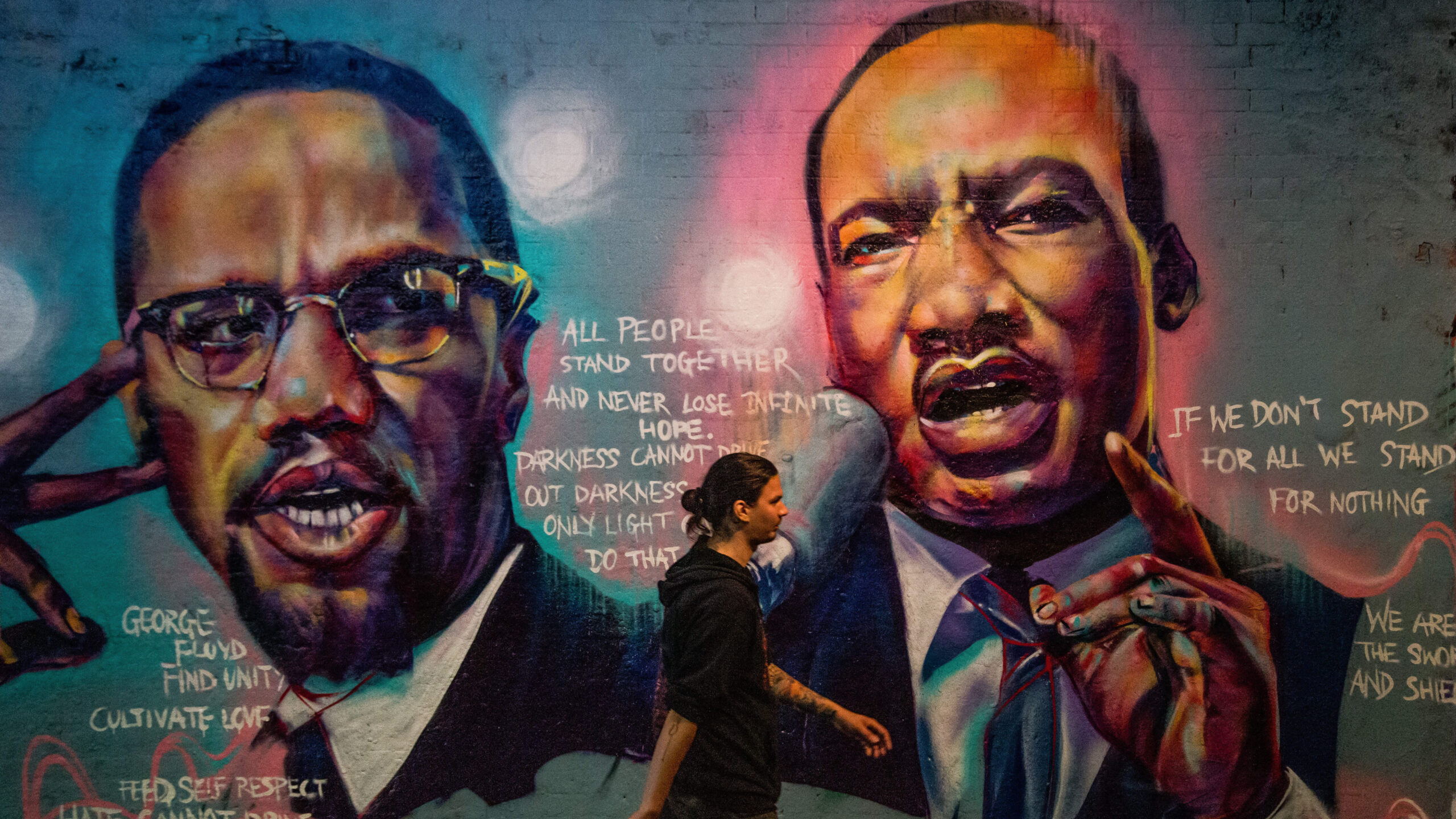Martin Luther King Jr. and Malcolm X were both influential civil rights activists, but employed vastly different approaches to their activism. King believed in non-violent resistance and peaceful protests, while Malcolm X advocated for militant rhetoric and self-defense. King worked within the political system to push for legislative change, while Malcolm X viewed the system as corrupted and in need of revolution. Despite their differences, both men had a profound impact on American society and their legacies continue to inspire activists today. The combination of both approaches ultimately led to the eventual success of the Civil Rights Movement.
Martin Luther King Jr. vs. Malcolm X: Two Civil Rights Activists and Their Different Methods Compared and Contrasted
Introduction
Martin Luther King Jr. and Malcolm X are two of the most well-known and esteemed civil rights activists in history. Both individuals fought for African American civil rights in the 1950s and 1960s, a time when segregation, institutional racism, and discrimination were rampant across the United States. Despite sharing a common goal, King and Malcolm X had very different approaches to their activism. In this article, we will compare and contrast the different methods used by King and Malcolm X to advance the cause of civil rights in America.
Martin Luther King Jr.: Non-Violent Protests and Peaceful Resistance
Martin Luther King Jr. was an adherent of the philosophy of non-violent resistance, which advocated for peaceful protests and civil disobedience to challenge injustices. His approach was influenced by the teachings of Mahatma Gandhi, who successfully led India to independence from British rule by employing non-violent tactics. King believed that the way to achieve civil rights for African Americans was through constitutional means, and that change could be achieved without resorting to violent tactics.
King’s tactics included sit-ins, boycotts, and marches to demand the end of segregation and institutional racism. His most famous protest was the Montgomery Bus Boycott, which lasted for over a year and resulted in the Supreme Court ruling that segregation on public buses was unconstitutional. King also organized the March on Washington in 1963, where he delivered his iconic “I Have a Dream” speech, advocating for racial equality and an end to discrimination.
Malcolm X: Militant Rhetoric and Self-Defense
Unlike King, Malcolm X took a far more militant approach to his activism. He was a proponent of black nationalism, which called for the creation of a separate state for African Americans. Malcolm X also believed that African Americans should defend themselves against white aggression, even if it meant using violence. In his view, white supremacy was so deeply ingrained in American society that only a radical revolution could bring about the desired change.
Malcolm X’s tactics included public speeches and rallies that often featured incendiary rhetoric. He advocated for the use of violence, saying that African Americans should be willing to defend themselves against white attacks. Malcolm X was also critical of King’s approach, calling his methods “too passive” and arguing that African Americans needed to achieve freedom by any means necessary, including violence.
Comparison
Despite their different approaches, King and Malcolm X shared a common goal of civil rights for African Americans. They were both highly influential figures in the Civil Rights Movement, inspiring thousands of people to take action against injustices.
One key difference between King and Malcolm X was their approach to white Americans. King believed that non-violent protests and peaceful resistance would be the most effective way to win over the hearts and minds of white Americans. He believed that by showing that African Americans were willing to suffer unjust treatment without resorting to violence, they would be able to convince white Americans of the need for change.
Malcolm X, on the other hand, believed that white Americans were irredeemable and that violence was the only way to bring about change. He saw white Americans as an aggressor and believed that African Americans needed to defend themselves against white violence. Malcolm X’s approach was more confrontational and did not seek to persuade white Americans to support their cause.
Contrast
Another difference between King and Malcolm X was their views on integration. King believed that African Americans should work towards integration and desegregation, while Malcolm X advocated for separatism and the creation of a separate state for African Americans. King believed that integration would be the most effective way to achieve racial equality, while Malcolm X saw it as a pipe dream that would only serve to reinforce white supremacy.
Additionally, King was more politically active and worked closely with politicians to push for legislative change. He believed that the best way to achieve civil rights was to work within the system, using legal means to challenge injustices. Malcolm X, on the other hand, was more critical of the political system, viewing it as corrupted and in need of revolution. He believed that change could not come from within the system, and that a radical break from the status quo was necessary.
Conclusion
Martin Luther King Jr. and Malcolm X were both influential figures in the Civil Rights Movement, fighting for the same cause of racial equality. While their approaches were vastly different, their impact on American society cannot be overstated. King’s use of non-violent protests and peaceful resistance inspired generations of activists, while Malcolm X’s militant rhetoric and self-defense tactics highlighted the deep-seated racism and hatred that existed in American society.
In the end, it was a combination of both approaches that led to the eventual success of the Civil Rights Movement. King’s peaceful protests captured the imagination of a nation, while Malcolm X’s confrontational approach forced white Americans to confront the ugliness of racism. The legacy of both men continues to inspire activists today, as they work towards achieving the dream of true racial equality.
